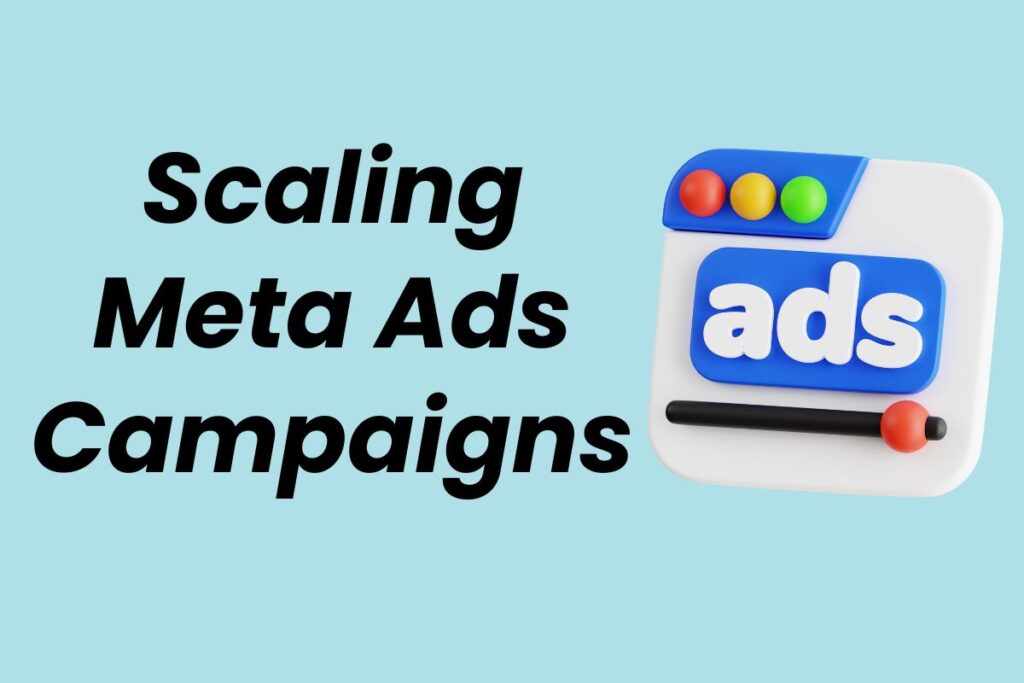
Meta Ads can be a game-changer for businesses looking to reach their target audience. But scaling campaigns too quickly often leads to wasted ad spend, poor ROI, and unnecessary frustration. If you want to grow your campaigns effectively, you need a strategy that balances budget, audience, and creative performance.
In this blog, we’ll walk you through how to scale Meta Ads campaigns efficiently without wasting budget, step by step.
What Does Scaling Meta Ads Campaigns Mean?
Scaling a Meta Ads campaign isn’t just about throwing more money at an ad. It’s about increasing reach, impressions, and conversions strategically.
There are two primary scaling methods:
- Vertical Scaling – Increasing your budget on top-performing campaigns or ad sets.
- Horizontal Scaling – Expanding your audience, testing new interests, or creating lookalike audiences.
Proper scaling helps your campaigns reach more potential customers without compromising performance or ROI.
Common Mistakes When Scaling Meta Ads
Many advertisers make the same errors when trying to grow their campaigns. Avoid these pitfalls:
- Increasing budget too quickly – Jumping from $50/day to $500/day can shock the algorithm and hurt performance.
- Ignoring audience fatigue – Showing the same ads repeatedly leads to lower engagement and higher costs.
- Not testing creatives before scaling – Scaling weak creatives wastes money fast.
- Overlooking campaign structure – Poor organization makes scaling chaotic and inefficient.
Smart Strategies to Scale Meta Ads Campaigns Without Wasting Budget
Here’s how to scale efficiently:
1. Gradual Budget Increases
Increase budgets in 20–30% increments every 2–3 days. This allows Meta’s algorithm to adjust without destabilizing performance.
2. Audience Expansion
Use lookalike audiences, interest stacking, or retargeting to reach new users. Horizontal scaling diversifies your audience and prevents oversaturation.
3. Creative Rotation
Regularly update your ad creatives to prevent fatigue. Test new images, videos, and copy before scaling large budgets.
4. Campaign Duplication vs CBO Scaling
- Campaign Budget Optimization (CBO): Let Meta distribute budget across ad sets automatically.
- Duplicating campaigns: Create copies of high-performing campaigns to test new audiences without affecting existing performance.
5. Automated Rules and A/B Testing
Use Meta Ads Manager’s automation rules to pause underperforming ads, adjust budgets, or rotate creatives automatically. Always run A/B tests to find the best-performing combinations.
Data-Driven Scaling
Scaling without data is like sailing without a compass. Focus on key metrics:
- ROAS (Return on Ad Spend): Are you making money for every dollar spent?
- CTR (Click-Through Rate): Are your ads engaging your audience?
- CPA (Cost per Acquisition): Are conversions profitable?
Integrating Conversion API ensures accurate tracking, even with browser privacy restrictions. Analyze trends carefully—scale only when performance is consistent.
Tools & Techniques That Help
- Meta Ads Manager: Built-in optimization and reporting tools.
- Analytics dashboards: Track performance across campaigns, ad sets, and creatives.
- AI Tools: Optimize creatives and copy faster for better engagement.
Case Example: Scaling Without Waste
A small e-commerce brand started with a $50/day ad campaign targeting a specific interest audience. By gradually increasing the budget by 25% every 3 days, testing new creatives weekly, and expanding into a 1% lookalike audience, they tripled revenue in 6 weeks without overspending.
This proves that careful scaling beats reckless budget increases every time.
Final Tips to Avoid Wasting Budget
- Start small, test, then scale.
- Balance automation with manual oversight.
- Refresh creatives and audiences regularly.
- Avoid chasing vanity metrics—focus on conversions and ROI.
Conclusion
Scaling Meta Ads campaigns doesn’t have to be risky. By using gradual budget increases, audience expansion, creative testing, and data-driven insights, you can grow your campaigns efficiently without wasting money.
Remember, successful scaling is a marathon, not a sprint. Test, analyze, optimize, and scale smartly.
